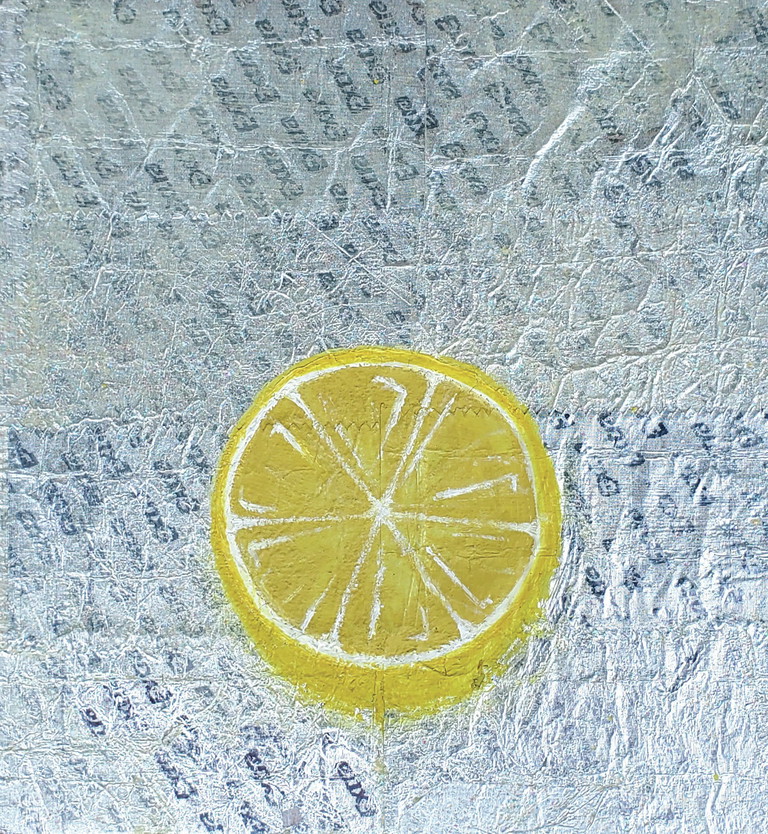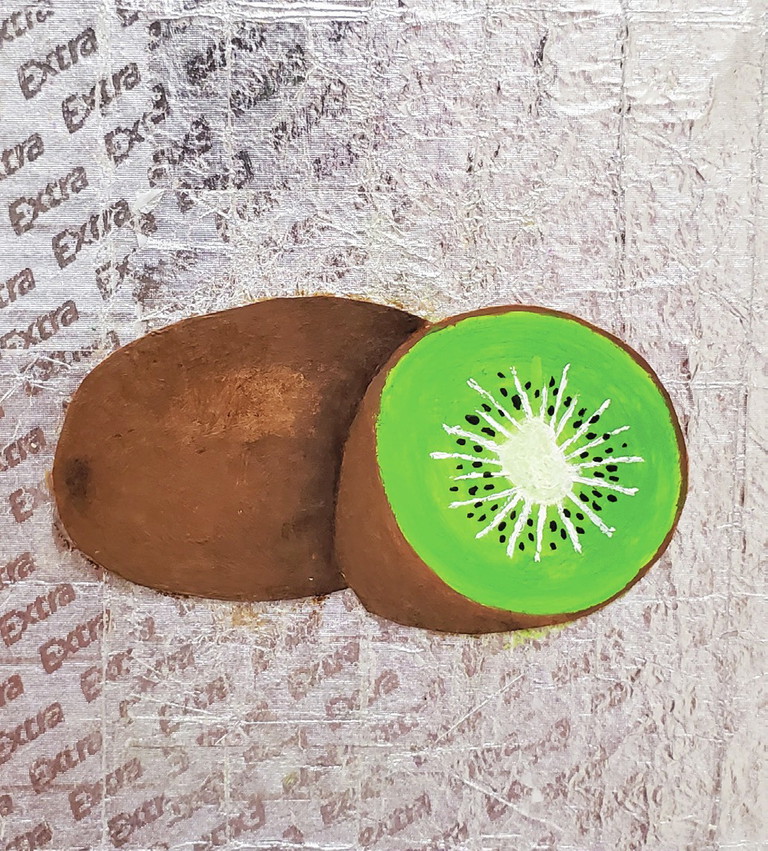MANAGING THE ART ROOM
Much More Than Recess with Crayons


Sophie, lemon in gouache and detailed kiwi painting on metallic gum wrappers.
Melissa Purtee
Have you ever heard TAB referred to as “recess with crayons”? The idea that TAB is a free-for-all or lacks educational value doesn’t represent the learning and engagement in the thousands of classrooms around the country that share this pedagogy. Organization, scaffolding, and planning are essential components of every TAB classroom, though how they are implemented varies. In my high-school classroom, I facilitate student choice by teaching students about different types of learning activities as options for studio work and how to set personal goals that support the direction of the work they choose to pursue.
Categories of Studio Work
In my classroom, there are five main categories of work: Learning, Exploring, Personal Style, Collaboration, and Formal Artwork. Students can choose from any of the five options, and making that choice helps them understand their learning as they create.
The Learning category involves absorbing new information related to art-making skills, materials, techniques, or processes and then practicing. It’s like the skill-building section of a project or lesson, except that students choose what to learn from the digital content I’ve developed for them or their own research.
TAB is much more than recess with crayons—it’s focused learning based on the goals students are empowered to set for themselves.
The next category, Exploring, involves students using familiar materials to experiment and try new things, drawing on their prior knowledge of art-making.
Personal Style is an option for learners with an established style or those who would like to use class time to develop one. They typically work in a series with materials that they excel at manipulating to create a body of work.
Collaboration is for students who want to work with a partner or group to create something bigger than they could independently.
Formal Artwork, the final of the five categories, is much like a project or unit in a more traditional class, except that students design the process and the final project themselves. For this option, students plan their own adventure to create a polished and original work of art. To get there, they select planning activities from a list of options, then create when they are ready.
Goal-Setting
Once students know about these five categories, they can effectively decide how they would like to spend their time in the studio. To help them manage their time with growing independence, I ask students to set specific goals and reflect on their progress in weekly digital portfolio entries. These goals, and the evidence that students collect as they work toward achieving them, paint a picture of students learning and increasing their skills in art-making, as well as directing their own learning. To illustrate this, I’d like to share the work of a student from my class.
A Student’s Artistic Growth
Sophie, a senior, began the year by completing a Learning activity focused on gouache. She then experimented with creating a surface with metallic gum wrappers she had been collecting and was inspired to use for art-making. She eventually decided to turn this into a Formal Artwork by adding a painting of a lemon in gouache.
Next, she spent most of October working on pen drawings as part of Inktober. Then she decided to create a second painting in the style of her lemon. She wrote this goal midway through the process:
Preview Mode - Subscribe to unlock full content


SchoolArts Magazine
Inspiring Creativity Since 1901
A national art education magazine committed to promoting excellence, advocacy, and professional support for educators in the visual arts.
Categories
Explore our inspiring content by topic